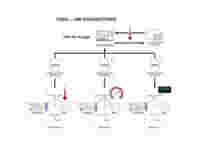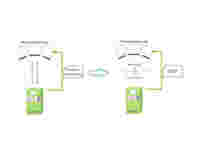Looking closely at today’s production systems, we quickly discover that they are not designed for the requirements of rapid conversion, simply because properties such as mobility, scalability, universality, compatibility and especially modularity were not taken into account in the initial application planning. However, modularity is a core requirement for adaptable production systems. There is a good reason for this: “Carving up” today’s monolithic systems into modules opens up a wide range of options. It becomes possible to easily adapt the production volume, relocate individual modules, carry out testing and perform run-in and acceptance at the R&D site, so the system can then be sent to the actual production site – without the need for trained engineers available at the production site.








